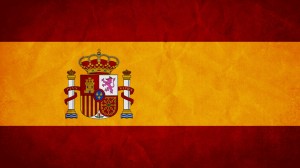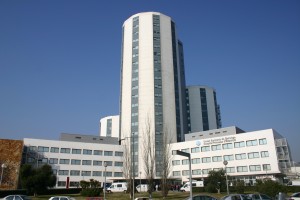 Population of Spain 2014
Population of Spain 2014
Based on the total number of births, total number of deaths, net migration rate, and the population as of 2013, the current population of the Kingdom of Spain is estimated to be about 47,171,105. The Spanish population makes up only 0.65% of the total world population and ranks 29th in population rankings, behind the Colombia, but ahead of the Ukraine. It is also considered to be the sixth-most populous country in Europe. At the end of 2013, the population of Spain was estimated to be about 46,926,963. Therefore, since the end of 2013, there has been a population increase of about 244,142 or a population growth rate of about 0.52%. Based on the total land area and the total current population, the population density of Spain is estimated to be about 93.23 people per square kilometer or 241.45 people per square mile.
Geography of Spain 2014
The total land area of Spain is about 505,992 square kilometer or 195,365 square miles, making it the 52nd largest country in the world. Spain is smaller than France, but larger than the state of California. It borders Portugal, Gibraltar, France, and Morocco. The major geographic feature of Spain is mountains. The main mountain ranges are the Pyrenees, Cordillera Cantabrica, and the Sierra Morena. The highest peak in the Iberian Peninsula is on the Mulhacen, which is in the Sistema Penibetico range, reaching 3,478 meters. However, the highest point in Spain is the Teide, which is a volcano in the Canary Islands, reaching 3,718 meters or 12,198 feet. The most populated island is the Tenerife and the least populated island is the Ons. Lastly, the coastal regions are made up of alluvial plains.
Government of Spain 2014
Since the adoption of the new Constitution in 1978, the government of Spain has been a constitutional monarchy. Also, once the Constitution was adopted, the country became very decentralized, establishing seventeen autonomous communities and two autonomous cities. Each community and city has its own government, budget, and administration. Despite these autonomies, the country is a unified nation, specifically through the monarch, King Juan Carlos I. King Juan Carlos I has served as the monarch of the country since November 22, 1975. Other than a national symbol of unity, the king serves as the commander-in-chief of the armed forces and as a moral authority and is considered to be the Head of State. The Head of Government is the Prime Minister, nominated by the King and confirmed by the Council of Ministers. Since November 20, 2011, the Prime Minister has been Mariano Rajoy Brey. The Prime Minister is the person in charge of all domestic and foreign policies. Lastly, the legislative branch is a bicameral legislation. The two houses are the Congress of Deputies and the Senate. The Congress of Deputies has 350 members and the Senate has 259 members. Representatives in both houses serve four-year terms. The Spanish government takes pride in the gender equality that exists throughout the government.
Language in Spain 2014
The Constitution of Spain mandates that it is the personal requirement of every Spaniard to know the Spanish language, which is known as Castilian in the Constitution. However, it also states that it respects the different cultures and traditions, including languages, of the citizens. Thus, the country is openly multilingual. Other than Spanish, the country recognizes official languages that are spoken frequently in the various autonomous regions. Some of the regional languages are Basque, spoken in the Basque Country and Navarre, Catalan, spoken in Catalonia, the Balearic Islands, and the Valencian Community (Catalan is known as Valencian in this region), and Galician, spoken in Galicia. 2% of the population speaks Basque, 17% speaks Catalan (Valencian), and 7% speaks Galician. Lastly, English and German tend to be spoken in the tourist regions of the country along the Mediterranean coasts and islands.
Immigration in Spain 2014
As of 2011, the immigrant population made up 12.2% of the Spanish population. The total number of immigrants is over 5.5 million people. However, due to the recent economic crisis in the country, many immigrants have left the country in order to find more opportunities. In 2008, the government attempted to incentivize immigrants to return to their home countries in order to free up job opportunities for native Spaniards. The plan was entitled, “Plan of Voluntary Return”, and it allowed the immigrants to continue to receive the unemployment benefits from Spain if they returned to their home country. However, the program failed and only around 1,500 immigrants bought into the idea. The countries with the largest number of immigrants are Romania, Morocco, and the United Kingdom. There are only 850,000 Romanian immigrants and over 750,000 Moroccan immigrants. Lastly, Spain has the second largest number of immigrants in terms of percentage in the European Union, behind Cyprus. However, in terms of numbers, Spain has the highest number of immigrants.
Education in Spain 2014
Based on the Fundamental Law of Education in the Constitution, education is required for all students from ages six to sixteen years, but is also free for those students as well. Around 67% of the schools are state schools, 26% are private schools that receive state funding, and 7% are completely private schools. There are four major levels of education: pre-school, primary school, compulsory secondary education, and post-compulsory schooling. If the parents wish to send their children to pre-school, they are able to do so free of charge. After completing the compulsory secondary education, if students wish to continue to the next level, they must be awarded a Secondary Education Certificate, which shows that the student was successful in his compulsory secondary studies. In the post-compulsory schooling, students can decide whether they want to pursue University studies or Vocational studies. Based on that decision, students obtain a specific curriculum that applies to their desired choice. Then in order to move from post-secondary to the University, students must pass the University Entrance Exam. A typical degree at a University lasts four years. The youth literacy rate among males is 99.5% and the youth literacy rate among females is 99.7%. Also, the net enrollment ratio for primary school is 99.7%. Lastly, the total adult literacy rate is measured to be 97.7% of the population.
Spain’s Population Change
 Health Care in Spain 2014
Health Care in Spain 2014
As of recent, the health care industry has taken some major changes, affecting the majority of the population. In 2012, public health care expenditures were cut by 13.7%, and in 2013, the expenditures were cut by 16.2%. The government also decided that any non-registered immigrants living in Spain could not receive care, unless it was for an emergency. However, the definition of the term emergency is left fairly ambiguous. One controversy in regards to this law is the lack of vaccination among children of migrants. The failure to vaccinate these children could mean the spread of a highly contagious disease. Also, due to the new law, patients must pay for parts of their treatments and medications, which is a deterrent for patients to even take their medications because they cannot afford them. As of 2012, the life expectancy in Spain was 82 years. Lastly, the under-five mortality rate is about 5 deaths per 1,000 children and the infant mortality rate is about 4 deaths per 1,000 infants.